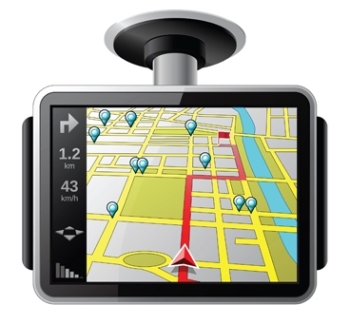May 4 2013
You get into your car and ask it to get you home in time for the start of the big game, stopping off at your favorite Chinese restaurant on the way to grab some takeout.
 New research could let vehicles, robots collaborate with humans
New research could let vehicles, robots collaborate with humans
But the car informs you that the road past the Chinese restaurant is closed for repairs, so you will not make it home in 30 minutes unless you choose a different food outlet. You select a nearby Korean restaurant from the options the car suggests, and set off on the chosen route.
Vehicles, robots and other autonomous devices could soon collaborate with humans in this way, thanks to researchers at MIT who are developing systems capable of negotiating with people to determine the best way to achieve their goals.
‘Everything around us is getting smarter’
“In general, everything around us is getting smarter,” says Brian Williams, a professor of aeronautics and astronautics and leader of the Model-Based Embedded and Robotic Systems group within MIT’s Computer Science and Artificial Intelligence Laboratory. “So we’re trying to allow people to interact with these increasingly autonomous systems in the same way that they would interact with another human.”
Ultimately such systems could be used to control autonomous vehicles, such as personal aircraft and driverless cars. But in the short term, Williams and graduate student Peng Yu are developing systems to allow conventional vehicles to work with their drivers to plan routes and schedules.
In a paper to be presented at the International Joint Conference on Artificial Intelligence in Beijing in August, Williams and Yu describe the use of their algorithm in car-sharing networks such as Zipcar. “The dilemma for Zipcar users is that they don’t want to pay a lot of money, so they only want to reserve the car for as long as they need it,” Williams says. “But they then run the risk of not reserving it for long enough and so having to pay a penalty.”
Users must therefore decide how best to fit everything they need to do into the time they have available. And this is where the algorithm comes in. “We want to design a car that’s smart and really works with the user,” Yu says.
Diagnosis through collaboration
The system, which is equipped with speech-recognition technology, first asks the user what she wants to achieve in the given amount of time. It then uses digital maps to come up with the most time- and energy-efficient plan of action.
However, if it determines that the user simply cannot achieve all of her goals within the time available, it analyzes the plan to detect which items on the schedule are problematic, such as a restaurant or grocery store that is too far from the Zipcar pickup point.
“Our technology views the process of collaboration as a diagnostic problem,” Williams says. “So the algorithm figures out why the travel plan failed, what were the important things that caused it to fail, and explains this back to the user.”
The system suggests a set of possible options to eliminate the problem, and the user can either choose one of these or give the algorithm more information about her preferences. “Then there is a back-and-forth dialogue until the algorithm finds something that meets the customer’s needs and that the car knows it can actually do,” Williams says.
Allaying ‘range anxiety’
The researchers are also investigating the use of their algorithm in plug-in hybrid electric vehicles. Despite the greater energy efficiency of plug-in hybrids, some drivers are deterred from buying the cars by concerns about running out of electricity miles from home or the nearest charging point — a fear known as “range anxiety.”
Installing the algorithm on these vehicles would allow people to plan their route, and even determine how fast to drive in order to use the batteries as efficiently as possible, while arriving at their destination safely and on time, Williams says.
Then, if the driver were to get stuck in traffic on the journey, the algorithm could suggest alternative plans, such as driving faster and using up more energy if time is of the essence, or diverting to a nearby fast charging point if the batteries are running too low.
The algorithm could also be used in robots, to allow them to collaborate with people more effectively. To this end, the researchers are working on a project with aircraft manufacturer Boeing to develop systems to improve how industrial robots and human workers cooperate with each other.
Richard Camilli, an associate scientist in the Deep Submergence Laboratory at Woods Hole Oceanographic Institution, is interested in applying the technology to the organization’s fleet of autonomous underwater vehicles (AUVs). The algorithm could allow operators to communicate with the robotic vehicles and instantly alter mission plans if the AUVs happen to meet with interesting science or difficult weather conditions on the way.
“There are a lot of analogies between the Zipcar example and autonomous vehicles,” Camilli says. “For example, when there is a lot of science to be done, and a lot of people counting on the quality of the data, and the AUVs can’t quite make it to a rendezvous point in time, you need to come up with the optimum solution for all those things simultaneously.”